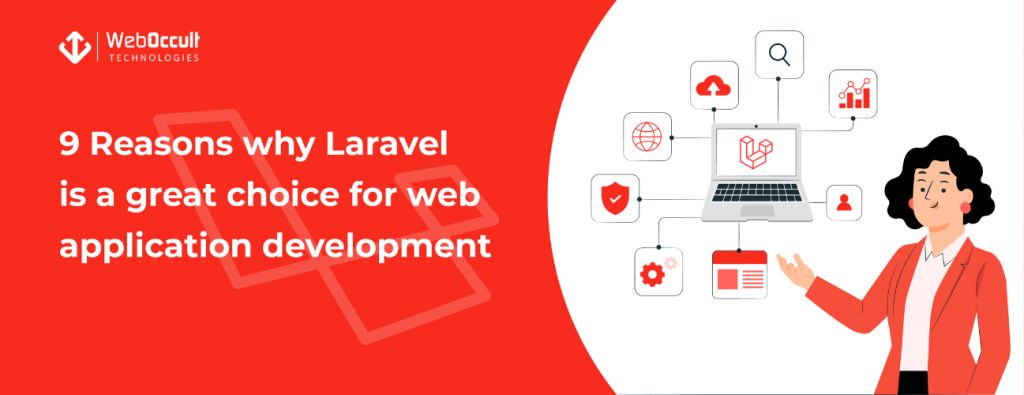
Why is it Important to Promote the Development of Artificial Intelligence

Author
Ruchir Kakkad
Date
28 Jan 2022
Time
19 min read
Category
AI/ML

What are we going to talk about in this article?
- The qualities of artificial intelligence
- Intelligence
- intentionality
- Adaptability
- Types of artificial intelligence technologies
- Process automation
- cognitive understanding
- Cognitive engagement
- Business Benefits of Artificial Intelligence Systems and Machine Learning
- The future of artificial intelligence
- Essential components of artificial intelligence
- Computer science and algorithms
- Data scientists and the importance of information
- subjectivity in artificial intelligence
- Why is artificial intelligence necessary?
Artificial intelligence is part of our daily lives. It is present in everything we do: from the content we see on our social networks, asking Siri for directions, to more complex uses such as developments in the information technology industry. Information and cybersecurity. It is not to mention the many benefits of artificial intelligence that are not as well recognized, such as health care, transportation, and finance, to name a few. Artificial intelligence offers a wide variety of possibilities and has revolutionized how we process information and integrate data to make decisions based on those results.
Interestingly, while many of our daily activities are powered by AI, many aren’t aware of what that means. As this kind of technology improves, so does the information gap, but one thing we can say for sure: Even if we don’t know how much artificial intelligence affects our lives, it will continue to evolve.
As it is a new technology, the uses and ethics involved are still debated, and policymakers have difficulty agreeing on regulatory laws. It is possible, and one example is that the European Union made progress in the field thanks to its European Commission.
Today we wanted to explore the many positive aspects of artificial intelligence and why the development of this technology is so important.
The qualities of artificial intelligence
Let’s start with a definition. According to a study by Shubhendu and Vijay, what we know as artificial intelligence are machines that respond to stimulation consistent with typical human responses and are given the human capacity for contemplation, judgment, and intention. These systems and procedures can make decisions that would require a human’s level of expertise. In addition, they need fundamental technologies to function, such as machine learning, natural language processing, rule-based expert systems, neural networks, deep learning, physical robots, and robotic process automation. Everything we name can help us anticipate problems or deal with setbacks as they arise. These technologies have three core qualities:
Intelligence
Artificial intelligence emerged alongside machine learning and data analytics. Machine learning analyzes the data and looks for trends in it. Once they find something relevant, software engineers use that information to fix a problem. All that is needed is voluminous and robust information to search for valuable and significant patterns. These data do not have to follow a specific type of medium or digital information species: they can be texts, photos, or more abstract data.
intentionality
When designing an artificial intelligence algorithm, there is a more or less clear objective: it is programmed to make fast and updated decisions. These machines are not passive; they come to conclusions that are not predetermined or known to their creators. With the information they collect with their sensors, remote sensing, or digital data, they can combine multiple levels of information from different sources, analyze it in a matter of seconds and reach valuable conclusions. Depending on the type of artificial intelligence used, decisions can be made or acted on based on the data gathered. Thanks to tremendous technological advances in computer, mechanical, and electronic engineering, we now have giant storage systems, fast processing, and state-of-the-art analytical techniques.
Adaptability
One of the most exciting aspects of artificial intelligence is that it can help us in real-time almost immediately. Artificial intelligence systems can learn and adapt when they integrate new information, so the result of their solutions changes. Imagine that you are in your car driving with the help of a GPS. These maps and apps adapt to road conditions in real-time thanks to artificial intelligence and data the systems collect from other drivers. These report the congestion that occurs due to crashes and the different points where there is more traffic or potholes, among other things. Human interference is unnecessary, as having the app open while driving is enough.
Types of artificial intelligence technologies
There are many possibilities to implement artificial intelligence technologies, and systems like the one we mentioned are already being developed in many areas. Today we will focus on the commercial applications of artificial intelligence.
Process automation
This use is common for businesses and companies using artificial intelligence: the automation of physical and digital tasks that are mundane and time-consuming for employees, such as administrative and financial tasks.
For example, some modern project management software has features that automatically assist daily tasks. By inputting information such as the number of billable hours and the type of project being carried out, these tools can automatically create profitability estimates by feeding in the information systems used to run. Imagine modifying whatever a project needs to be profitable without wasting resources.
This software also includes financial reporting functions that allow employees to cross-reference information to analyze specific topics. You can review the historical data of some clients and compare it with the income rates. You can get this or any other type of report with just one click and without entering new data.
These actions are usually carried out by robotic process automation tools that act like a human entering or consuming information from different sources or information ecosystems.
Process automation can take on data entry tasks, enter call center and email information into company records, or regularly update customer information. You can also process legal and contractual documentation by processing natural language. These tasks are easy for human intelligence but would take a long time to complete, and that is the driving force behind AI tools, especially in process automation: it saves time and frees up the human brain to do more tasks.
These tools raise some concern about losing jobs, but most of the tasks that can be automated are already outsourced. Replacing workers is not the goal, and it doesn’t usually happen either.
Cognitive understanding
Another use of artificial intelligence is cognitive understanding, which is the ability to read a large amount of information and apply pattern recognition to detect trends and interpret their meaning. These machine learning algorithms can help with large-scale predictions, such as predicting the next item a customer will buy or analyzing real-time data and instantly spotting credit or insurance fraud. They may also review warranty information to identify product safety or quality issues.
These data analytics are not what traditional data analysis systems usually use. This type of artificial intelligence is trained; the model learns and improves over time. This ability allows the system to enhance its processing and prediction functions while analyzing deeper and more detailed data.
Cognitive engagement
Another use of artificial intelligence, although not as common as the other two, is the use of machine learning, bots, and intelligent agents. These systems can be beneficial: for example, they can offer customer support throughout the year. It means assisting with various things, from password change requests to technical support. Some systems even include speech recognition and can use troubleshooting tools for audio requests.
Bots are prevalent in chats, and you will surely see them frequently, even on social networks and websites of different companies. Some companies began to use them internally and for some clients’ tasks. These bots can respond to employee-related topics, such as benefits or human resources policies.
Another form of cognitive engagement is providing recommendation systems for retailers, which greatly enhanced their ability to create precise and personalized interactions with customers. They are also popular in the healthcare field, where they can assist in developing care plans by including prior patient information.
Business Benefits of Artificial Intelligence Systems and Machine Learning
One of the reasons why there is more and more research on artificial intelligence in academia is because there is a lot of interest in developing the economic and financial opportunities that artificial intelligence offers. According to a 2017 article, PriceWaterhouseCoopers estimated that, by 2030, AI technologies could increase global GDP to $15.7 trillion, a growth of 14%.
The financial benefits are very attractive, and the practical applications are endless. The current practical uses of artificial intelligence in business are as follows:
- Control other types of information: non-numeric data is more complex than numerical data. These systems use voice, and image recognition developed thanks to deep learning neural networks. Some practical examples include email marketing for lead generation, programs that can answer inquiries, and differentiate promising ones to route them to a sales operator.
- Numeric Data Robots are almost identical to Numeric Data Controllers but with a physical body. These intelligent robots can be found in sales spaces with extremely well-structured operations. These robots can perform mechanical tasks such as pouring coffee, folding clothes picking up items from a warehouse location and taking them to the delivery section, like the ones used at Amazon.
- Data robots are similar to the previous item, but these types of robots can process all kinds of information. Imagine a robotic assistant in a large store that can answer verbal queries, scan products, and move to a specific storage area to guide customers. Certain robots also assist with security and include a thermal vision to help security guards on their patrols. The goal is to free humans from customer service to focus on more complex tasks.
Of course, the leading financial motive is not for the robots to serve cartoon coffee or fulfil the role of a science fiction robot assistant. Perhaps there will be a market for autonomous vehicles in the future. Still, the focus is on the analysis that is carried out to predict changes in the market, in the generation of leads and sales, and its role as driver competitiveness. Artificial intelligence can be applied in many businesses, such as digital marketing, health, finance, agriculture, and more.
The future of artificial intelligence
The next step in artificial intelligence research would be incorporating contextual information to make better predictions and carry out more complex tasks. For example, driverless cars are still in the development stages, and they seem to have problems when used in more challenging climates.
Another possible future use is in the field of medical research. An essential aspect of searching for new cures for diseases includes understanding how specific proteins work. If you know the whole shape, you’ll learn how it affects the human body and how to deal with it. It is essential for autoimmune diseases. Proteins can also function as cures on their own, and this is where the actual value of this practice lies, but the problem is that proteins can behave and take millions of forms.
The process of understanding this can be very costly and time-consuming, even for artificial intelligence. Although complicated, human ingenuity plays a vital role. Just check out the crowdsourcing game FoldIt: a way was found to use the abilities of humans and their natural talent for puzzles to start shaping the way certain amino acids, the building blocks of proteins, are formed. This prediction of protein structures is something that our current technology cannot process efficiently and cheaply.
Another possible discovery that we could see is that artificial intelligence acquires an understanding of human language content. It could help translate and share many resources globally and empower individuals to understand other languages properly and portable translation devices.
When people translate languages, they understand the content and reproduce it in another language applying the necessary context and the ideas expressed. Machines still can’t do this; they can’t contextualize or understand the meaning behind the language. They can now translate certain sets of answers, but this does not compare to what they could achieve in the future.
Essential components of artificial intelligence
To better understand how AI systems work, let’s look at some of their essential components.
Computer science and algorithms
Computer science is the study of computers and their systems. Its discipline studies software, and its systems, including their theory, designs, developments, and applications.
One of the primary purposes of this field is the creation of computer systems, which are calculations of arithmetic and non-arithmetic procedures. These systems follow a structured and well-defined model that guides their work procedure, and we know these models by the name of “algorithm.” They are rules and instructions given to systems to tell them how to function.
Data scientists and the importance of information
In machine learning and other fields of artificial intelligence such as neural networks and learning systems, this algorithm gives the system the ability to learn on its own and come to new conclusions.
These systems are programmed by data scientists, who study extracting essential and valuable information from the data. They do this through a combination of experience, programming skills, and knowledge of math and statistics. The insights gained from data analytics translate into tangible business and operational value.
Subjectivity in artificial intelligence
To reach conclusions and information about artificial intelligence, we need:
- An algorithm that includes a set of rules
- programmed by a data scientist
- that is fed from a group of data.
It seems simple, but there are many ways in which subjectivity can appear without the programmer being aware of it. In a revealing article published in Nature, which assesses the role of artificial intelligence in achieving sustainable development goals, the many ways in which artificial intelligence can be susceptible to discrimination based on race, gender, and low income are demonstrated. Also, it may not work in the same way in developing countries and rich nations.
There are many reasons why this can happen: the programmer’s subjectivity since most of the artificial intelligence development is carried out by male programmers from rich nations, and therefore, there are many errors in the information selected, and how the models behave does not always consider minority groups.
Another problem related to artificial intelligence is the climate impact of the current hardware we use. Data storage centres and servers have a very high carbon footprint and consume a lot of electricity. Those in charge of these systems are usually rich nations, but they affect everyone. However, there is hope thanks to the development of more efficient cooling systems and renewable energy.
The data sets used to make calculations are very important, and a current example of how subjectivity directly affects us is related to covid vaccines. There are many testimonies around the world that vaccines can affect women’s menstrual cycle. The reason it’s safe is that no one included that information at the research and testing stage, and that’s due to subjectivity.
Another way AI can miss a large part of the population is by not realizing that there are no data pools that include people living in extreme poverty. By reaching conclusions that do not have the entire population, these conclusions would not be universal and could not be used effectively when implementing government policies without high risks. Other examples include police forces and racial profiling, which feed predictive crime data to artificial intelligence systems using facial recognition, and these errors decrease field validation.
However, these are not reasons to stop the development of new artificial intelligence technologies. When a new technology appears, it is expected that there will be an adjustment period in which the scope of said tool is still being tested. But as we, as a global society, continue to use the incredible possibilities that artificial intelligence gives us, we must be aware of the subjectivity we could apply.
It means that we need to continue researching and understanding the many ways we can make mistakes when designing new AI algorithms and systems, mainly by AI researchers and during research projects. However, this does not mean that artificial intelligence’s abilities to help companies achieve valuable results are useless.
Why is artificial intelligence important?
The amount of information and data generated is at a level never seen before. Humans, machines and artificial intelligence work hard to get more and more information. Therefore, it is logical that we would need to ask for assistance in this new endeavour to analyze this information since the human brain cannot process the amount of information that exists.
We need help. We are experiencing a computer revolution, and we should use all the tools available to us. The benefits of AI-powered software can be huge and can help make better, more informed business decisions. Also, they can spot unexpected problems and help find solutions for them. They can even assist in turning a failing operation into a profitable venture.
At Weboccult, we’re in the business of helping professional services operations reach their full potential, nurture their talent, and achieve better profitability estimates and better communication. Working smarter is the way to a better and more efficient business. Let us know if you want to step in the intelligent direction and request a trial today.
You Might Also Like
When it comes to web development, PHP frameworks are the utilized solutions. Despite the fact that there are other PHP frameworks. Symfony and Laravel are the best options. They’re popular for a multitude of reasons, including their great code, which allows developers to create incredible applications. Create a web application to bring your brand’s identity […]
Technology has improved leaps and bounds. What used to be a dream a couple of years ago is a reality. This is because people are continuously looking for new things. They want to evolve and make things better for themselves and the world at large. In recent times, we’ve seen a 360° transformation in how […]
Laravel has been noted as one of the best framework options to develop a web application, and rightfully so. As per the official website, the web development framework is an open-source PHP web application framework. The syntax is especially simple and easy. It works on MVC (model-view-controller), an architectural pattern to separate the model, the […]
Let’s Build The Future
Have An Idea? Work With Us And See How It Goes. We Promise To Go The Extra Mile For Every Project That We Take Onboard.



